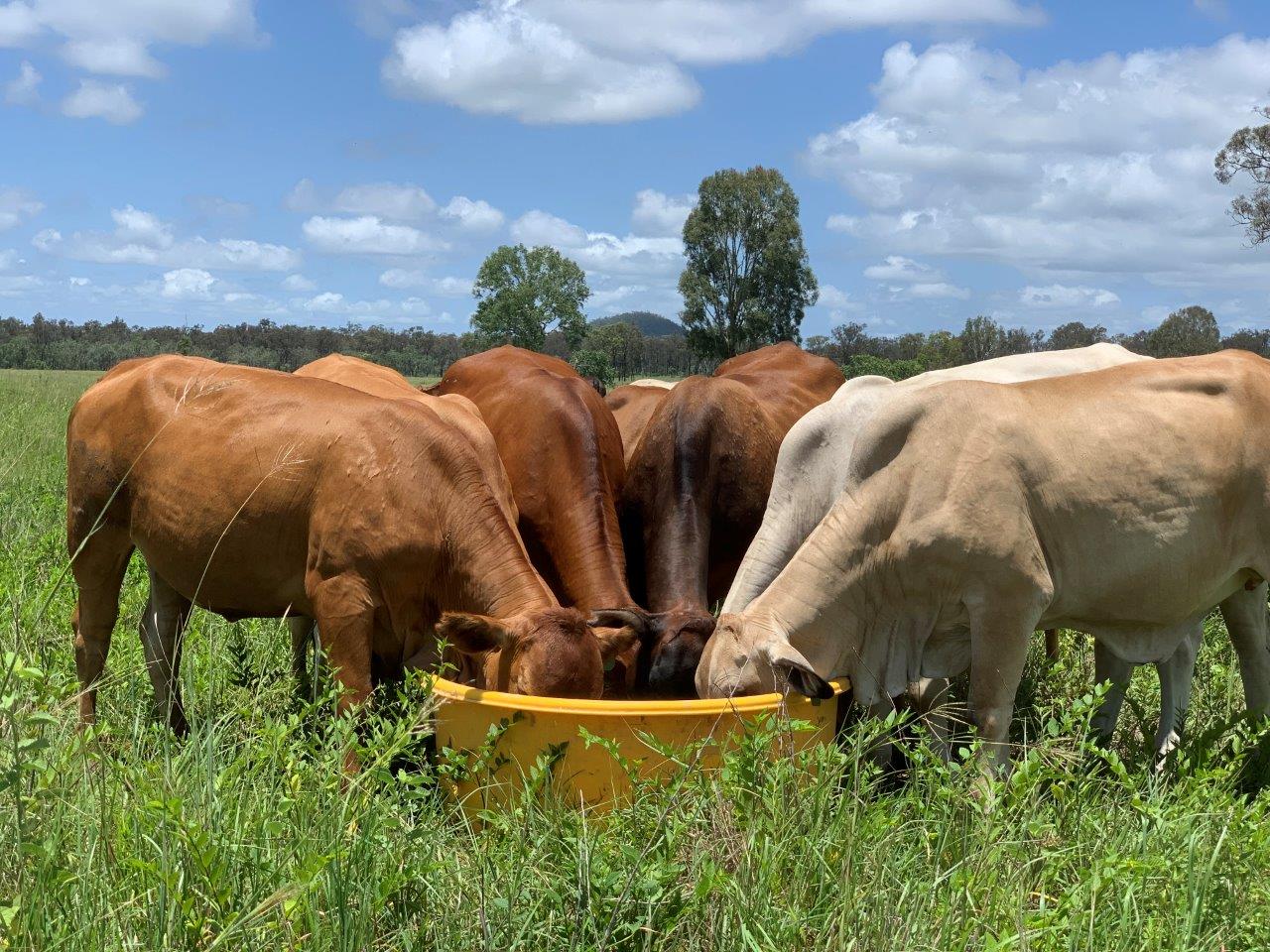Nutrient requirements of beef cattle

When considering feeding cattle it is important to:
- Establish the level of performance required (i.e. growth or maintenance).
- Determine the nutrient requirements the animal needs to perform at the desired level. Including animal breed (i.e. Bos taurus or Bos indicus) and animal class (e.g lactating cow, dry cow, bull, weaner etc)
- Estimate as accurately as possible the nutritional value of the pasture and the animal’s current performance.
- Determine what the nutrient deficiency is and how to correct this deficiency.
For more information see Planning and managing a supplementary feeding program.
The following table provides estimates of the nutrient requirements of breeding animals at various stages of pregnancy and lactation, and in turn what feeds could be used to overcome any deficiency that exists. It is provided as an example only. Please contact your local cattle advisor for information specific to your situation.
You can read how these estimates were calculated in the B.NBP.0799 Final Report – Nutrient requirement tables for Nutrition EDGE manual (PDF 787 kB).
Daily nutrient requirements of Bos indicus crossbred heifers, cows and bulls, walking 7 km/day, for metabolisable energy (ME), rumen degradable protein (RDP), undegraded dietary protein (UDP), calcium and phosphorus for maintenance and production
| Liveweight (kg) | Daily gain (kg) | Daily requirements | |||
|---|---|---|---|---|---|
| ME (MJ) | RDP/UDPA (g) | Calcium (g) | Phosphorus (g) | ||
| Pregnant heifers – last third of pregnancy | |||||
| 350 | 0.4 | 62 | 512 | 20 | 15 |
| 400 | 0.4 | 68 | 564 | 22 | 16 |
| 450 | 0.4 | 74 | 614 | 23 | 18 |
| Dry pregnant mature cows – last third of pregnancy | |||||
| 350 | 0 | 45 | 373 | 12 | 12 |
| 350 | 0.4 | 58 | 496 | 20 | 15 |
| 400 | 0 | 50 | 412 | 13 | 13 |
| 400 | 0.4 | 64 | 532 | 22 | 16 |
| 450 | 0 | 55 | 452 | 15 | 15 |
| 450 | 0.4 | 70 | 579 | 23 | 18 |
| 500 | 0 | 59 | 492 | 17 | 17 |
| 500 | 0.4 | 75 | 623 | 25 | 20 |
| 550 | 0 | 64 | 532 | 18 | 18 |
| 550 | 0.4 | 80 | 665 | 26 | 21 |
| Lactating first-lactation cows — with calf four months old | |||||
| 350 | 0.1 | 96 | 798/145 | 27 | 19 |
| 400 | 0.1 | 103 | 849/128 | 28 | 20 |
| 450 | 0.1 | 108 | 898/112 | 29 | 22 |
| Lactating mature cows — with calf four months old | |||||
| 350 | 0.1 | 93 | 772/351 | 23 | 18 |
| 400 | 0.1 | 99 | 821/336 | 25 | 19 |
| 450 | 0.1 | 105 | 867/321 | 26 | 21 |
| 500 | 0.1 | 110 | 911/307 | 28 | 22 |
| 550 | 0.1 | 115 | 953/293 | 29 | 24 |
| Bulls | |||||
| 500 | 0.4 | 100 | 825 | 23 | 19 |
| 600 | 0.4 | 112 | 927 | 25 | 22 |
| 750 | 0.4 | 128 | 1063 | 26 | 25 |
| 800 | 0.4 | 134 | 1110 | 27 | 27 |
A Where only one value is given this is RDP and there is no UDP requirement. Source: B.NBP.0799 Final Report – Nutrient requirement tables for Nutrition EDGE manual, 2015.
The ‘B.NBP.0799 Final Report – Nutrient requirement tables for Nutrition EDGE manual’ also has estimates of:
- Metabolisable energy requirements (MJ/day) of cattle for maintenance and growth. For example if the pasture has a metabolisable energy value of 8MJ/kg of dry matter, then for Bos indicus crossbred steers weighing 300kg and a growth rate of 0.5kg/day is desired, the requirement for energy is 57MJ/day.
- Rumen degraded protein (RDP) and undegraded dietary protein (UDP) requirements (g/day) of cattle for maintenance and growth. For example if the pasture has a metabolisable energy value of 7MJ/kg of dry matter, then for Bos indicus crossbred steers weighing 300kg and a growth rate of 0.5kg/day is desired, the requirement for rumen degraded protein (RDP) is 510g/day and 68g/day for undegraded dietary protein (UDP).
For more information about Nutrition EDGE workshops please email FutureBeef or contact your local beef extension officer.
The Nutrition EDGE workshop is part of the EDGEnetwork®, an education and information initiative of Meat & Livestock Australia designed to benefit livestock producers and the wider industry. Phone 1800 023 100 or visit the EDGEnetwork website for more information.
Reviewed by Leanne Hardwick, Department of Agriculture and Fisheries.
This document was reviewed as part of the GrazingFutures Project. GrazingFutures is funded by the Queensland Government’s Drought and Climate Adaptation Program (DCAP) that aims to build drought and business resilience for Queensland livestock producers.
Further reading
Planning and managing a supplement feeding program →
Nutrition →